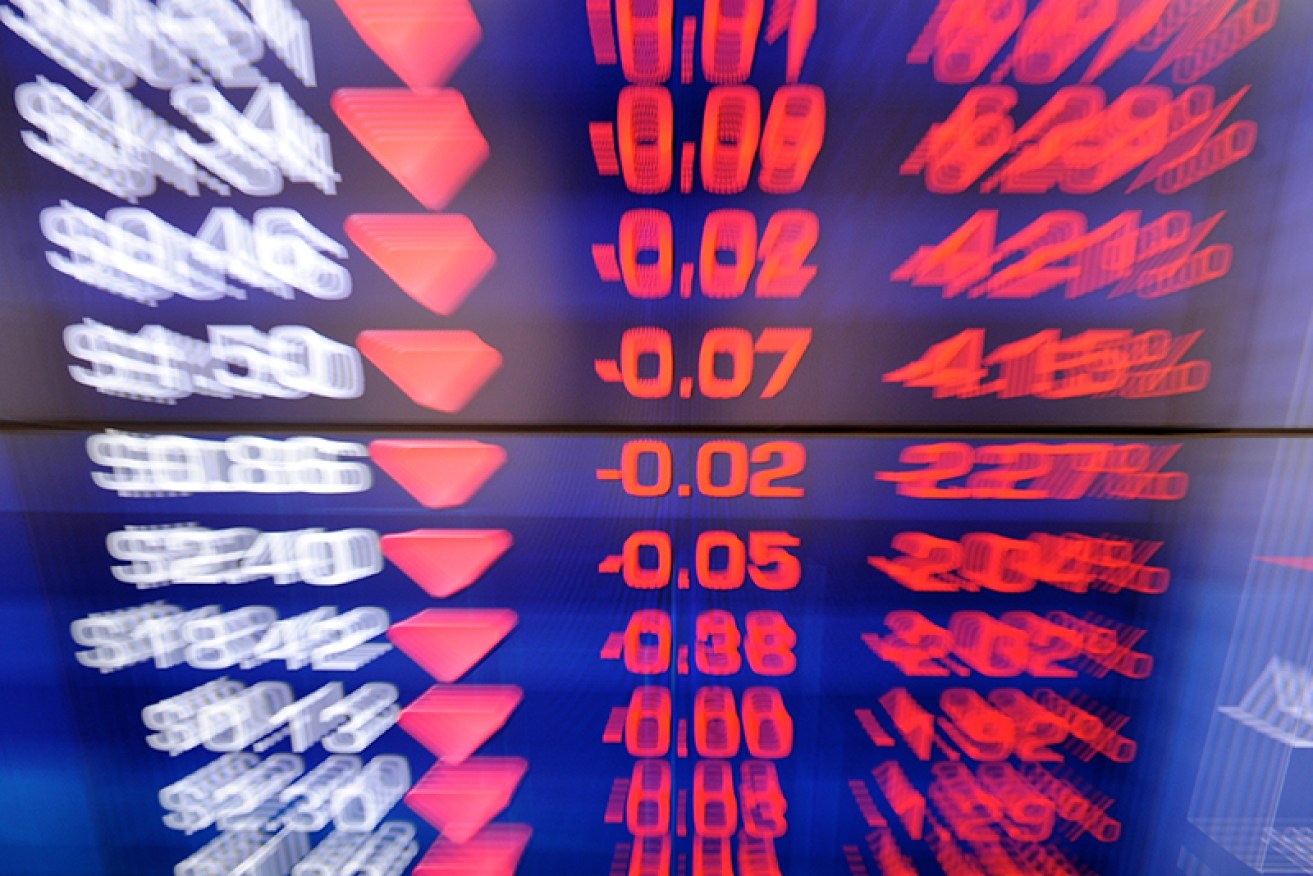The ASX is tumbling. Here’s what it means


Australian investors won't see much joy if Donald Trump sticks with his tariff policies. Photo: Shutterstock
The Australian sharemarket had another bad day on Tuesday, falling 1.2 per cent to 5303, and bringing its losses to 11.5 per cent since its April peak.
Given the definition of a correction is a decline of 10 per cent, it is now official: the Australian sharemarket has well and truly entered correction territory.
This has significant ramifications for superannuation funds. With an incredibly volatile sharemarket on a clear downward trend, delivering decent returns to members is a major challenge.
• Senate to examine super gender gap
• Super funds snap up CBA shares
• Super trustees say $1m nest eggs are pipe dream for most retirees
According to superannuation research company SuperRatings, while July saw a bit of a comeback after a miserable June, returning 2.2 per cent, August has already more than wiped those gains off. That brings financial year-to-date returns to -0.2 per cent.
But SuperRatings founder and chair Jeff Bresnahan said while the future is (as ever) uncertain, super funds are not in as bad a position as it may seem.
“Just what the remainder of the month has in store will soon unfold, however, the diversification of most super options is keeping most people insulated against heavier losses in several key asset classes,” he said.
Defending against volatility

The big four banks dominate the sharemarket, meaning super funds just can’t avoid owning them.
The average super fund invests around 30 per cent of its members’ super in Australian equities, making it its biggest exposure, rivalled only by international equities. That means super funds are highly vulnerable to the fluctuations of the sharemarket.
One way to avoid losing money when the sharemarket tanks is by picking winners on the stock market, and avoiding losers. But while this approach can work for small investors, it doesn’t for big ones like super funds.
The ASX 200 is dominated by a handful of massive companies such as the big four banks, BHP Billiton, Telstra and Wesfarmers. Big super funds with tens of billions of dollars to invest simply cannot avoid owning these companies. Without them, there just aren’t enough ASX-listed companies to hold all their dough.
That means they need to look elsewhere for their ‘downside protection’.
SuperRatings general manager of research Kirby Rappell said there are three key asset classes that super funds rely on for volatility and downside protection: infrastructure, unlisted property and hedge funds.
Infrastructure and property

Infrastructure assets are a particularly valuable asset when sharemarket returns are weak. Photo: Shutterstock
For big funds like AustralianSuper, Cbus and QSuper, infrastructure is probably the most important asset outside equities. AustralianSuper, for example, has 13 per cent of its total funds under management (FUM) in infrastructure.
“You find there’s less volatility within infrastructure assets and it probably gives funds who have very long investment horizons an opportunity to match their cashflows. A good example would be a lot of the port infrastructure that’s been sold [in New South Wales],” said Mr Rappell.
Assets like ports, toll roads, shopping centres and electricity networks provide super funds with an incredibly reliable income because they are near-monopolies. However, they are also extremely expensive and difficult to sell, meaning you can only buy them if you can afford to lock away large sums of money.
Super funds with lots of young members can do this, which is why they are such prolific investors in infrastructure and big unlisted property. And when there’s a lot of sharemarket volatility, these stable investments are particularly valuable.
Hedge Funds
Hedge funds got a very bad name during the global financial crisis, thanks to their strategy of ‘short-selling’ companies they expected to decline in price. Executives of Lehman Brothers, the bank whose collapse kicked off the GFC, blamed its destruction largely on the behaviour of hedge funds.
But hedge funds also serve a useful purpose. They use very complicated and ingenious ways of investing in equities that avoid having any correlation to the benchmark. In other words, whatever the ASX as a whole does, the hedge fund does something else.
By investing in hedge funds, said Mr Rappell, “what super funds are trying to do is reduce correlation with equities as much as possible”.
He said post-GFC super funds are much more controlled about which hedge funds they invest in.
“There’s greater monitoring, and the funds are going to those hedge funds direct, rather than through another fund manager,” he said.
Other asset classes used to protect against sharemarket volatility include bonds and private equity, though neither are as popular in Australia as they are in other countries.








